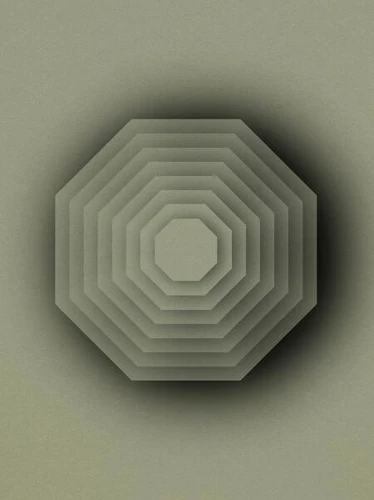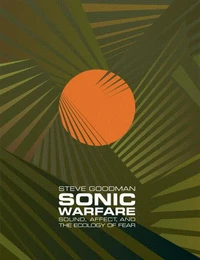AUDINT - Unsound:Undead /anglais
Par :Formats :
Disponible dans votre compte client Decitre ou Furet du Nord dès validation de votre commande. Le format ePub protégé est :
- Compatible avec une lecture sur My Vivlio (smartphone, tablette, ordinateur)
- Compatible avec une lecture sur liseuses Vivlio
- Pour les liseuses autres que Vivlio, vous devez utiliser le logiciel Adobe Digital Edition. Non compatible avec la lecture sur les liseuses Kindle, Remarkable et Sony
- Non compatible avec un achat hors France métropolitaine
 , qui est-ce ?
, qui est-ce ?Notre partenaire de plateforme de lecture numérique où vous retrouverez l'ensemble de vos ebooks gratuitement
Pour en savoir plus sur nos ebooks, consultez notre aide en ligne ici
- Nombre de pages320
- FormatePub
- ISBN978-1-913029-47-0
- EAN9781913029470
- Date de parution18/06/2019
- Protection num.Adobe DRM
- Taille4 Mo
- Infos supplémentairesepub
- ÉditeurUrbanomic
Résumé
Tracing the the potential of sound, infrasound, and ultrasound to access anomalous zones of transmission between the realms of the living and the dead. For as long as recording and communications technologies have existed, operators have evoked the potential of sound, infrasound, and ultrasound to access anomalous zones of transmission between the realms of the living and the dead. In Unsound:Undead, contributors from a variety of disciplines chart these undead zones, mapping out a nonlinear timeline populated by sonic events stretching from the 8th century BC (the song of the Sirens), to 2013 (acoustic levitation), with a speculative extension into 2057 (the emergence of holographic and holosonic phenomena).
For the past seven years the AUDINT group has been researching peripheral sonic perception (unsound) and the ways in which frequencies are utilized to modulate our understanding of presence/non-presence, entertainment/torture, and ultimately life/death. Concurrently, themes of hauntology have inflected the musical zeitgeist, resonating with the notion of a general cultural malaise and a reinvestment in traces of lost futures inhabiting the present.
This undead culture has already spawned a Lazarus economy in which Tupac, ODB, and Eazy-E are digitally revivified as laser-lit holograms. The obscure otherworldly dimensions of sound have also been explored in the sonic fictions produced by the likes of Drexciya, Sun Ra, and Underground Resistance, where hauntology is virtually extended: the future appears in the cracks of the present. The contributions to this volume reveal how the sonic nurtures new dimensions in which the real and the imagined (fictional, hyperstitional, speculative) bleed into one another, where actual sonic events collide with spatiotemporal anomalies and time-travelling entities, and where the unsound serves to summon the undead.
ContributorsLawrence Abu Hamdan, Lendl Barcelos, Charlie Blake, Lisa Blanning, Brooker Buckingham, Al Cameron, Erik Davis, Kodwo Eshun, Matthew Fuller, Kristen Gallerneaux, Lee Gamble, Agnès Gayraud, Steve Goodman, Anna Greenspan, Olga Gurionova, S. Ayesha Hameed, Tim Hecker, Julian Henriques, Toby Heys, Eleni Ikoniadou, Amy Ireland, Nicola Masciandaro, Ramona Naddaff, Anthony Nine, The Occulture, Luciana Parisi, Alina Popa, Paul Purgas, Georgina Rochefort, Steven Shaviro, Jonathan Sterne, Jenna Sutela, Eugene Thacker, Dave Tompkins, Shelley Trower, and Souzana Zamfe.
For the past seven years the AUDINT group has been researching peripheral sonic perception (unsound) and the ways in which frequencies are utilized to modulate our understanding of presence/non-presence, entertainment/torture, and ultimately life/death. Concurrently, themes of hauntology have inflected the musical zeitgeist, resonating with the notion of a general cultural malaise and a reinvestment in traces of lost futures inhabiting the present.
This undead culture has already spawned a Lazarus economy in which Tupac, ODB, and Eazy-E are digitally revivified as laser-lit holograms. The obscure otherworldly dimensions of sound have also been explored in the sonic fictions produced by the likes of Drexciya, Sun Ra, and Underground Resistance, where hauntology is virtually extended: the future appears in the cracks of the present. The contributions to this volume reveal how the sonic nurtures new dimensions in which the real and the imagined (fictional, hyperstitional, speculative) bleed into one another, where actual sonic events collide with spatiotemporal anomalies and time-travelling entities, and where the unsound serves to summon the undead.
ContributorsLawrence Abu Hamdan, Lendl Barcelos, Charlie Blake, Lisa Blanning, Brooker Buckingham, Al Cameron, Erik Davis, Kodwo Eshun, Matthew Fuller, Kristen Gallerneaux, Lee Gamble, Agnès Gayraud, Steve Goodman, Anna Greenspan, Olga Gurionova, S. Ayesha Hameed, Tim Hecker, Julian Henriques, Toby Heys, Eleni Ikoniadou, Amy Ireland, Nicola Masciandaro, Ramona Naddaff, Anthony Nine, The Occulture, Luciana Parisi, Alina Popa, Paul Purgas, Georgina Rochefort, Steven Shaviro, Jonathan Sterne, Jenna Sutela, Eugene Thacker, Dave Tompkins, Shelley Trower, and Souzana Zamfe.
Tracing the the potential of sound, infrasound, and ultrasound to access anomalous zones of transmission between the realms of the living and the dead. For as long as recording and communications technologies have existed, operators have evoked the potential of sound, infrasound, and ultrasound to access anomalous zones of transmission between the realms of the living and the dead. In Unsound:Undead, contributors from a variety of disciplines chart these undead zones, mapping out a nonlinear timeline populated by sonic events stretching from the 8th century BC (the song of the Sirens), to 2013 (acoustic levitation), with a speculative extension into 2057 (the emergence of holographic and holosonic phenomena).
For the past seven years the AUDINT group has been researching peripheral sonic perception (unsound) and the ways in which frequencies are utilized to modulate our understanding of presence/non-presence, entertainment/torture, and ultimately life/death. Concurrently, themes of hauntology have inflected the musical zeitgeist, resonating with the notion of a general cultural malaise and a reinvestment in traces of lost futures inhabiting the present.
This undead culture has already spawned a Lazarus economy in which Tupac, ODB, and Eazy-E are digitally revivified as laser-lit holograms. The obscure otherworldly dimensions of sound have also been explored in the sonic fictions produced by the likes of Drexciya, Sun Ra, and Underground Resistance, where hauntology is virtually extended: the future appears in the cracks of the present. The contributions to this volume reveal how the sonic nurtures new dimensions in which the real and the imagined (fictional, hyperstitional, speculative) bleed into one another, where actual sonic events collide with spatiotemporal anomalies and time-travelling entities, and where the unsound serves to summon the undead.
ContributorsLawrence Abu Hamdan, Lendl Barcelos, Charlie Blake, Lisa Blanning, Brooker Buckingham, Al Cameron, Erik Davis, Kodwo Eshun, Matthew Fuller, Kristen Gallerneaux, Lee Gamble, Agnès Gayraud, Steve Goodman, Anna Greenspan, Olga Gurionova, S. Ayesha Hameed, Tim Hecker, Julian Henriques, Toby Heys, Eleni Ikoniadou, Amy Ireland, Nicola Masciandaro, Ramona Naddaff, Anthony Nine, The Occulture, Luciana Parisi, Alina Popa, Paul Purgas, Georgina Rochefort, Steven Shaviro, Jonathan Sterne, Jenna Sutela, Eugene Thacker, Dave Tompkins, Shelley Trower, and Souzana Zamfe.
For the past seven years the AUDINT group has been researching peripheral sonic perception (unsound) and the ways in which frequencies are utilized to modulate our understanding of presence/non-presence, entertainment/torture, and ultimately life/death. Concurrently, themes of hauntology have inflected the musical zeitgeist, resonating with the notion of a general cultural malaise and a reinvestment in traces of lost futures inhabiting the present.
This undead culture has already spawned a Lazarus economy in which Tupac, ODB, and Eazy-E are digitally revivified as laser-lit holograms. The obscure otherworldly dimensions of sound have also been explored in the sonic fictions produced by the likes of Drexciya, Sun Ra, and Underground Resistance, where hauntology is virtually extended: the future appears in the cracks of the present. The contributions to this volume reveal how the sonic nurtures new dimensions in which the real and the imagined (fictional, hyperstitional, speculative) bleed into one another, where actual sonic events collide with spatiotemporal anomalies and time-travelling entities, and where the unsound serves to summon the undead.
ContributorsLawrence Abu Hamdan, Lendl Barcelos, Charlie Blake, Lisa Blanning, Brooker Buckingham, Al Cameron, Erik Davis, Kodwo Eshun, Matthew Fuller, Kristen Gallerneaux, Lee Gamble, Agnès Gayraud, Steve Goodman, Anna Greenspan, Olga Gurionova, S. Ayesha Hameed, Tim Hecker, Julian Henriques, Toby Heys, Eleni Ikoniadou, Amy Ireland, Nicola Masciandaro, Ramona Naddaff, Anthony Nine, The Occulture, Luciana Parisi, Alina Popa, Paul Purgas, Georgina Rochefort, Steven Shaviro, Jonathan Sterne, Jenna Sutela, Eugene Thacker, Dave Tompkins, Shelley Trower, and Souzana Zamfe.





